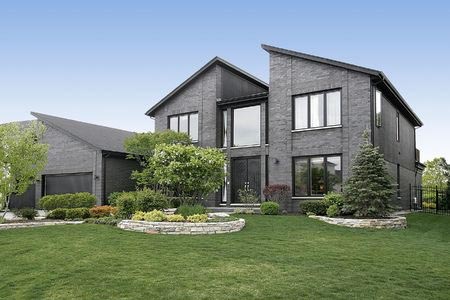Warmer Weather Brings In The Buyers, Is There Inventory?
 After three consecutive months of decline, the S&P Case-Shiller 20-City Composite Index remained nearly unchanged in February. Year-over-year home prices rose by 12.90 percent in February as compared to 13.20 percent in January.
After three consecutive months of decline, the S&P Case-Shiller 20-City Composite Index remained nearly unchanged in February. Year-over-year home prices rose by 12.90 percent in February as compared to 13.20 percent in January.
20 Percent Below Their 2006 Pre-recession Peak
Analysts note that in spite of recent slowdowns in home prices, the year-over-year rates of home price growth remain close to peak price growth attained in 2006. National home prices remain approximately 20 percent below their 2006 pre-recession peak.
13 cities posted lower rates of price gains in February. The Case-Shiller 10 and 20 city indices showed year-over-year price gains of 13.10 and 12.90 percent respectively. Only five cities posted year-over-year gains in price appreciation.
Las Vegas, Nevada continues to lead home price growth but its year-over-year rate of home price growth slowed from January’s reading of 24.9 percent to February’s reading of 23.10 percent. Washington, D.C. posted its eighth consecutive month of home price gains with a year-over-year reading of 9.10 percent, its highest rate of price increases since May 2006.
Dallas, Texas posted a year-over-year rate of 10.10 percent and a month-to-month increase of 0.20 percent, which continues the city’s record home price growth.
Home Price Gains Expected To Slow In Coming Months
Analysts said that more homes are expected to come on the market and also noted that the rapid increase in home prices for some areas likely sidelined some buyers. As inventories of homes increase, home prices are expected to rise at more modest rates. Job markets continue to experience ups and downs and incomes are relatively flat.
These factors can cause would-be homeowners to take a “wait-and-see” stance. Price increases in other sectors can also impact home prices, as buyers adjust their home purchase plans to what they can afford to spend.
Pending Home Sales Rise In March
The NAR reported that its pending home sales index rose by 3.40 percent in March as compared to a decrease of -0.80 percent for February. The March reading showed the first increase in pending home sales in nine months, and was the highest reading since November.
Warmer weather allowed more buyers shop for homes, but remains 7.90 percent lower than in March 2013. Higher home prices and low inventories of available homes were cited as reasons for the lower reading.
Pending home sales by region showed mixed results, and suggested the impact of severe winter weather on potential home buyers.
Northeast: +1.40 percent
Midwest: -0.80 percent
South: +5.60 percent
West: +5.70 percent
Based on a slow start during the first quarter of 2014, the NAR forecasts 2014 sales of existing homes at 4.9 million as compared to 5.1 million existing homes sold in 2013.
Categories
- Around The Home
- Awards
- Bankruptcy History
- Budget
- Chapter 7 Bankruptcy
- Construction Loan
- Credit
- Credit Scoring
- Environmental Awareness
- Escrow Tips
- Fair Housing
- Federal Reserve
- FHFA
- Financial Crisis
- Financial Fraud
- Financial Reports
- Foreclosure
- Holiday Tips
- Holidays
- Home Building Tips
- Home Buyer Tips
- Home Buying Tips
- Home Care
- Home Care Tips
- Home Decorating
- Home Financing Tips
- Home Maintenance
- Home Mortgage
- Home Mortgage
- Home Mortgage Tips
- Home Mortgages
- Home Seller Tips
- Home Selling Tips
- Home Tips
- Home Values
- Home Values
- Homebuyer Tips
- Homeowner Tips
- Housing Analysis
- Housing Market
- Investment Properties
- Market Outlook
- Mortagage Tips
- Mortgage
- Mortgage Application
- Mortgage Guidelines
- Mortgage Rates
- Mortgage Tips
- mortgage-rates-whats-ahead-september-17-2012
- Organization Tips
- Personal Development
- Personal Finance
- Rankings
- Real Estate
- Real Estate Definitions
- Real Estate Tips
- Real Estate Trends
- Selling Your Home
- Student Loans
- Tax Debts
- Taxes
- The Economy
- Travel
- Uncategorized